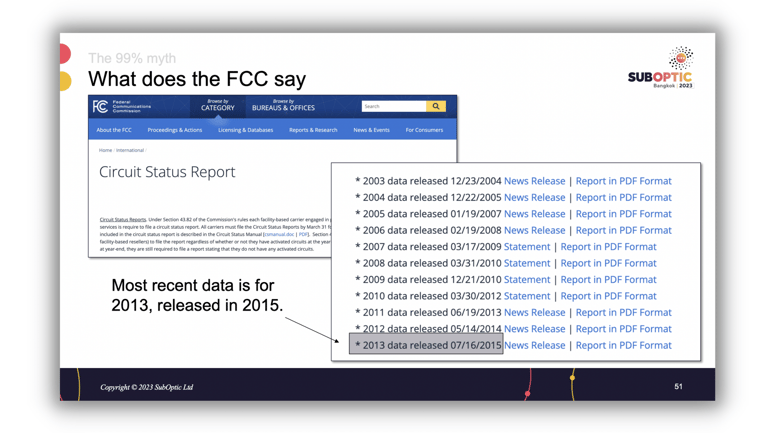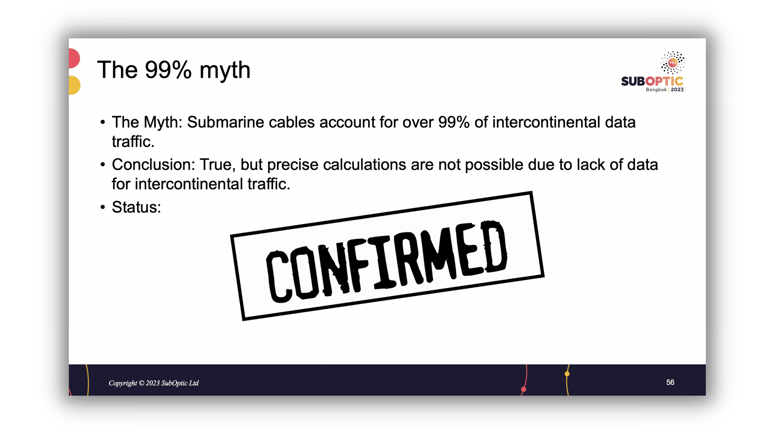“Submarine cables account for over 99% of intercontinental data traffic” is regularly quoted in the press with no source given.
It’s time for some fact-checking.
Getting to the Source
While digging into the origin of this myth, I was able to find one instance where a source was given. It was accredited to us, TeleGeography.
The citation linked to our Submarine Cable FAQs page, which states: “Statistics released by U.S. Federal Communications Commission indicate that satellites account for just 0.37% of all U.S. international capacity.”
We're only talking about U.S. international capacity here—not the total global capacity—and in relation to satellites.
I decided to go to the FCC’s website next.
Below, you’ll see a screenshot from the FCC’s Circuit Status Report page and a list of the reports that they offer.

The most recent data is for 2013, released in 2015. It’s almost 10 years old now; not a great source.
There’s no new data because the FCC changed the reporting requirement and satellite operators don’t have to report their circuits anymore. So that’s a dead-end for us, unfortunately.
Other Ways To Test This Myth
The Conclusion
So, do submarine cables account for over 99% of intercontinental data traffic?
We can confirm that this is true. However, we can’t do precise calculations without data for intercontinental satellite traffic.

For more like this, download our latest mythbusters presentation slides.
Alan Mauldin
Alan Mauldin is a Research Director at TeleGeography. He manages the company’s infrastructure research group, focusing primarily on submarine cables, terrestrial networks, international Internet infrastructure, and bandwidth demand modeling. He also advises clients with due diligence analysis, feasibility studies, and business plan development for projects around the world. Alan speaks frequently about the global network industry at a wide range of conferences, including PTC, Submarine Networks World, and SubOptic.




